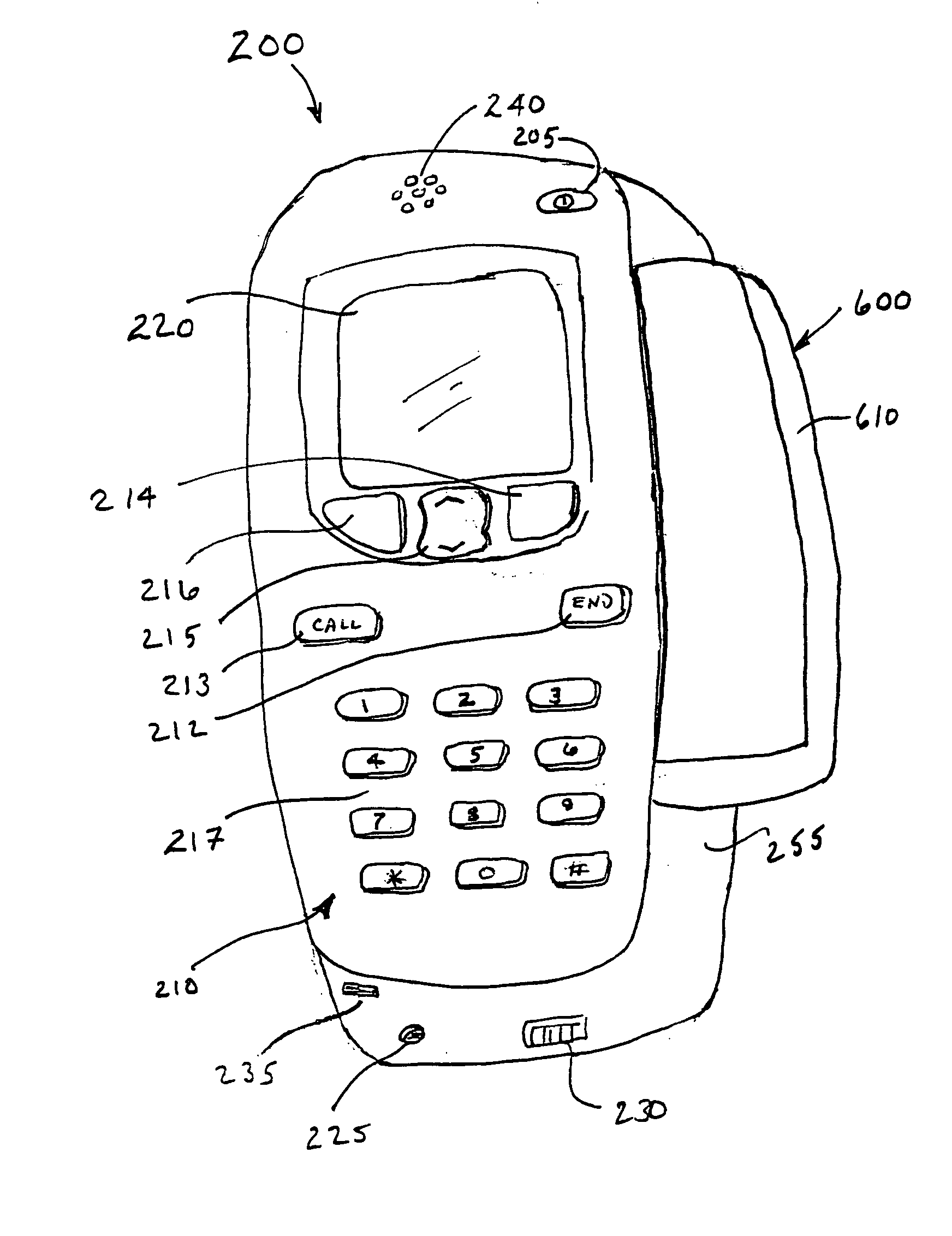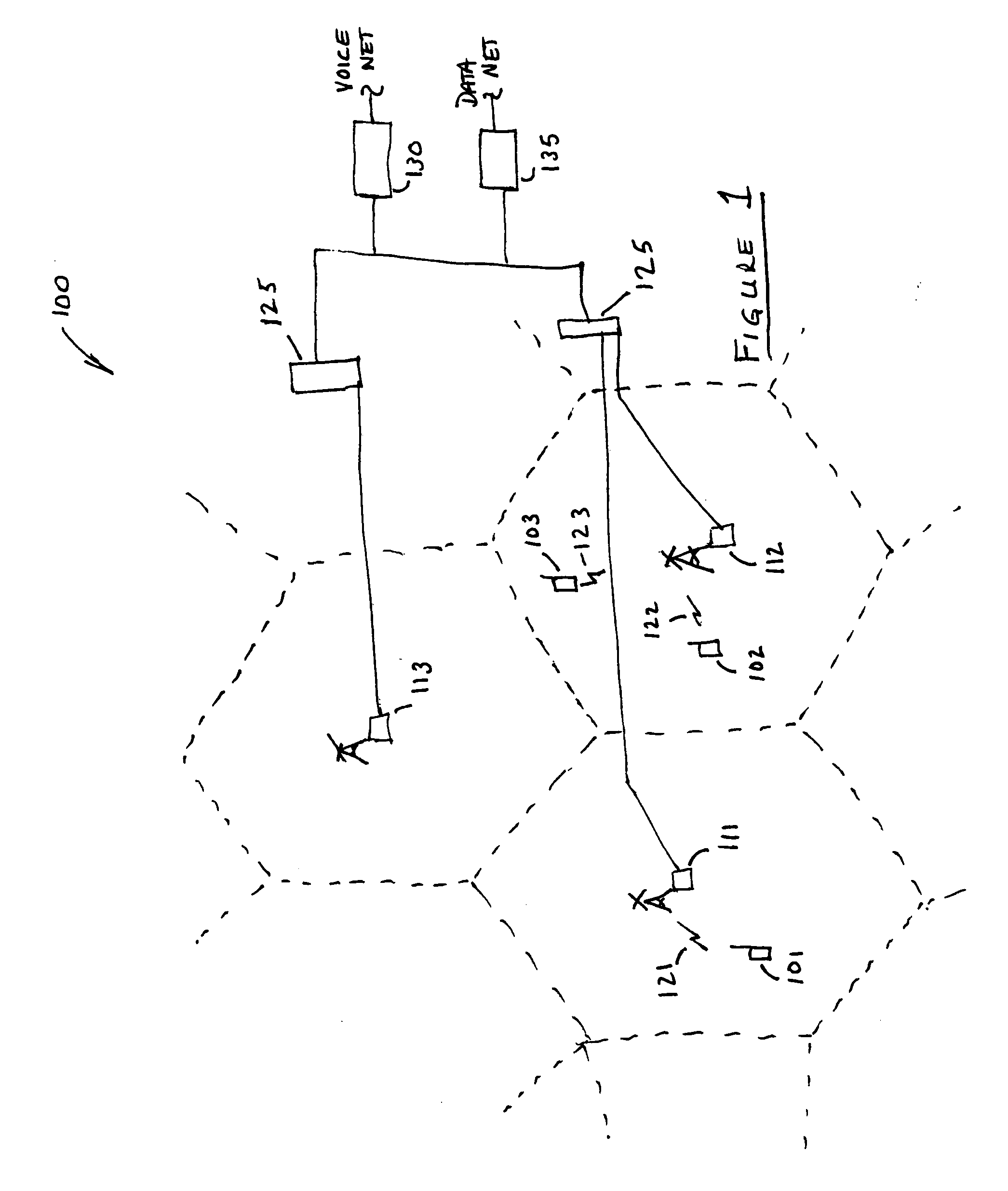Antenna module for mobile phone
a mobile phone and antenna module technology, applied in the field of radio telephony, can solve the problems of limited mobility of a traditional telephone, limited channelization frequency available, and inability to tolerate interruptions as easily, and achieve the effect of increasing the cost of basic mobile stations
- Summary
- Abstract
- Description
- Claims
- Application Information
AI Technical Summary
Benefits of technology
Problems solved by technology
Method used
Image
Examples
Embodiment Construction
[0035] FIGS. 1 though 9, discussed herein, and the various embodiments used to describe the present invention are by way of illustration only, and should not be construed to limit the scope of the invention. Those skilled in the art will understand the principles of the present invention may be implemented in any similar radio-communication device, in addition to those specifically discussed herein.
[0036] The present invention is directed to an antenna module for using in connection with a mobile phone that may be used to provide mobile receive diversity (MRD) while at the same time overcoming many of the disadvantages accompanying prior attempts to achieve this result.
[0037]FIG. 3 is a simplified block diagram illustrating an antenna module 300 according to an embodiment of the present invention. Antenna module 300 includes an antenna element 305, which will provide diversity when used in conjunction with the internal antenna of a mobile phone (not shown in FIG. 3). Note that ant...
PUM
 Login to View More
Login to View More Abstract
Description
Claims
Application Information
 Login to View More
Login to View More - R&D
- Intellectual Property
- Life Sciences
- Materials
- Tech Scout
- Unparalleled Data Quality
- Higher Quality Content
- 60% Fewer Hallucinations
Browse by: Latest US Patents, China's latest patents, Technical Efficacy Thesaurus, Application Domain, Technology Topic, Popular Technical Reports.
© 2025 PatSnap. All rights reserved.Legal|Privacy policy|Modern Slavery Act Transparency Statement|Sitemap|About US| Contact US: help@patsnap.com



